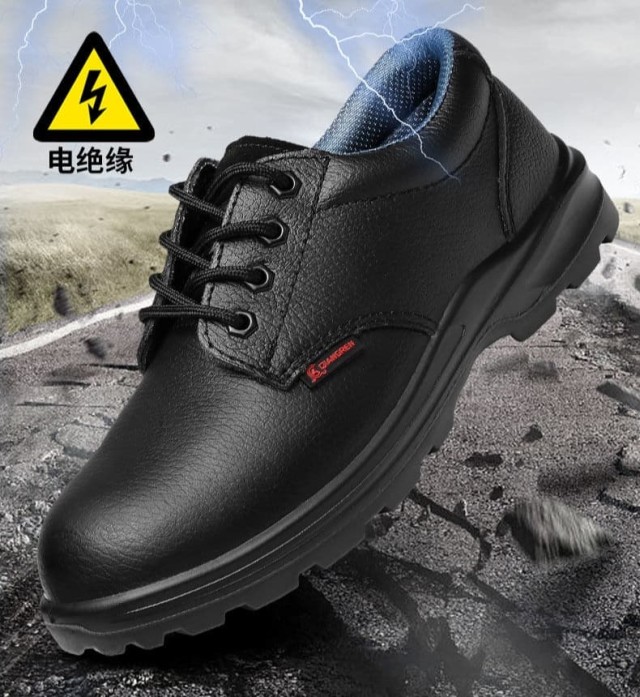Safety footwear isn’t just about compliance—it’s about creating a barrier between workers and preventable injuries. With workplace hazards ranging from falling objects to electrical currents, selecting the right protective footwear requires understanding safety ratings, matching features to risks, and balancing protection with all-day comfort. Here’s how to navigate the process with confidence.
Understanding Safety Footwear Ratings
Decoding ASTM F2413 and F2412: What Each Code Means for Your Safety
All OSHA-compliant safety footwear must meet ASTM F2413-18 standards, which mandate toe protection (steel or composite) and resistance to impacts (75 ft-lbs) and compression (2,500 lbs). The companion standard, ASTM F2412-18a, outlines test methods for these features.
Key markings to look for:
- I/75: Impact resistance (75 ft-lbs)
- C/75: Compression resistance (2,500 lbs)
- EH: Electrical hazard protection (up to 18,000 volts in dry conditions)
- PR/MET: Puncture-resistant midsoles (tested against a 270-lb force)
Example: A boot labeled ASTM F2413-18 I/75 C/75 EH protects against crushing forces, impacts, and electrical shocks—ideal for utility workers.
Mapping Workplace Hazards to Protective Features
1. Puncture Risks (Construction, Waste Management)
- Solution: Look for PR or MET ratings. Steel or fiberglass midsoles prevent nails or sharp debris from penetrating.
- Real-world case: A construction worker avoided a severe foot injury when a punctured boot’s steel plate stopped a falling rebar spike.
2. Electrical Hazards (Utilities, Manufacturing)
- Solution: EH-rated footwear with non-conductive soles and heels. Note: These don’t protect against live wires—only incidental contact.
3. Slip Resistance (Food Processing, Oil/Gas)
- Solution: Outsoles with SRC (slip-resistant on ceramic/steel) or SRA (slip-resistant on ceramic) ratings. Oil-resistant rubber compounds enhance grip.
Balancing Safety, Comfort, and Durability in High-Risk Environments
Protective features shouldn’t compromise wearability:
- Weight: Composite toes reduce fatigue vs. steel.
- Breathability: Moisture-wicking liners prevent blisters in hot environments.
- Fit: OSHA requires employers to provide properly fitted footwear—ill-fitting shoes increase tripping risks.
Pro tip: Test footwear in real work conditions before bulk purchasing. A manufacturing plant reduced foot fatigue complaints by 40% after switching to lighter composite-toe boots.
Real-World Examples: When Proper Footwear Prevented Disasters
- Chemical Spill Response: A lab technician’s acid-resistant boots prevented burns when a sulfuric acid container ruptured.
- Warehouse Safety: A steel-toe boot absorbed the impact of a falling pallet, avoiding a broken foot.
Compliance Consequences: Why Ratings Matter
OSHA penalties for non-compliant footwear can exceed $120,000 for repeat violations. More critically, inadequate protection leads to:
- Productivity losses from injuries
- Higher insurance premiums
- Legal liabilities
Employers must conduct hazard assessments to determine footwear needs under 29 CFR 1910.136.
Ready to Equip Your Team with OSHA-Compliant Safety Footwear?
3515 partners with distributors and bulk buyers to deliver certified, hazard-specific footwear tailored to your industry’s risks. From puncture-resistant soles to electrical hazard protection, our range combines safety and comfort—because no job is worth a preventable injury.
Contact 3515 today to discuss custom solutions for your workforce.
Related Products
- Wholesale Customizable Suede Safety Boots - Puncture-Proof with Velcro Closure
- Wholesale Durable Camo Canvas Shoes with High-Traction Rubber Soles
- Puncture-Resistant Velcro Safety Boots for Wholesale & Custom Manufacturing
- Customizable Anti-Smash Safety Boots for Wholesale & Private Label Manufacturing
- Athletic Safety Shoes with Dial Closure & Steel Toe for Wholesale & Custom Manufacturing
Related Articles
- How to Choose Work Boots That Match Your Job Demands and Safety Needs
- How Safety Work Boots Engineer Protection: Features and Standards for Targeted Hazard Mitigation
- How to Choose Work Boot Materials for Maximum Safety and Durability
- How to Choose Work Boots That Match Your Industry's Safety Needs
- Matching Men’s Work Shoe Safety Technologies to Workplace Hazards



















